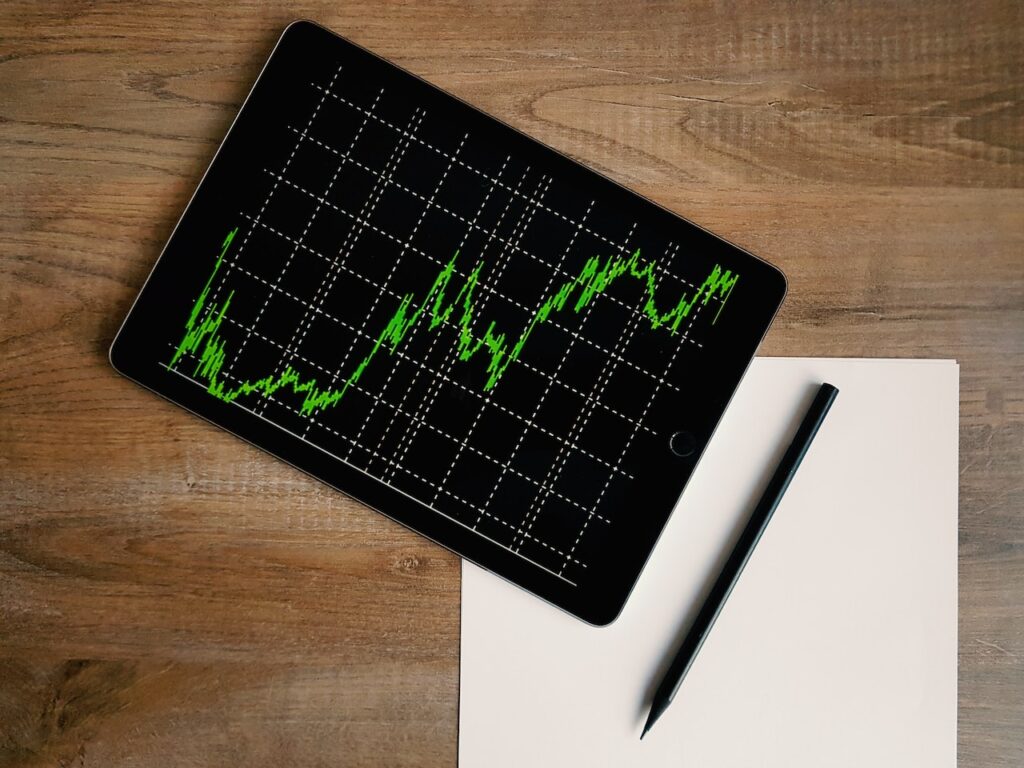The Insider’s Guide to Understanding Forex Trading Signals

1. Introduction to Forex Trading Signals
Forex trading signals play a crucial role in the world of foreign exchange trading, providing traders with valuable insights and indicators for making informed trading decisions. Whether you are a novice or experienced trader, understanding how forex trading signals work can greatly enhance your ability to navigate the dynamic and volatile forex market. In this comprehensive guide, we will delve into the intricacies of forex trading signals, exploring their types, functionality, and the key factors to consider when using them. Additionally, we will discuss the process of selecting a reliable signal provider and examine various performance metrics to assess the effectiveness of signals. Lastly, we will explore how to effectively integrate these signals into your trading strategy while highlighting common pitfalls and challenges to be aware of. By the end of this article, you will possess the insider knowledge necessary to comprehend and leverage forex trading signals to your advantage.
1. Introduction to Forex Trading Signals
1.1 What are Forex Trading Signals?
Forex trading signals are like your personal GPS in the confusing world of foreign exchange. They are alerts or notifications that tell you when to buy or sell a particular currency pair. Think of them as your trusty sidekick, guiding you through the ups and downs of the forex market.
1.2 The Importance of Forex Trading Signals
Why should you care about forex trading signals? Well, unless you have a crystal ball or the ability to see into the future, trading without signals is like trying to navigate a maze blindfolded. Forex signals give you valuable insights based on analysis, expert opinion, or even algorithms, helping you make more informed trading decisions.
2. How Forex Trading Signals Work
2.1 Understanding Signal Generation
Ever wondered how these signals magically appear? Well, it’s not magic, but it might as well be. Signal generation involves a combination of technical analysis, fundamental analysis, or even advanced algorithms that crunch numbers faster than your morning coffee machine. Basically, it’s all about finding patterns, trends, and indicators that suggest when a currency will rise or fall.
2.2 Transmission and Delivery of Signals
Once the signals are generated, it’s time for them to make their way to you. There are various ways signals can be transmitted – through email, SMS, mobile apps, or even good old-fashioned carrier pigeons. Okay, maybe not pigeons, but you get the idea. The important thing is that the signals reach you in a timely and reliable manner so that you can take action.
3. Types of Forex Trading Signals
3.1 Technical Analysis Signals
Technical analysis signals are like Sherlock Holmes sniffing out clues in the forex market. They rely on historical price data, chart patterns, and indicators to predict future price movements. So, if you’re into charts, graphs, and decoding mysterious patterns, technical analysis signals might be your jam.
3.2 Fundamental Analysis Signals
While technical analysis signals focus on charts, fundamental analysis signals delve into the world of economics, politics, and global events. These signals consider factors like interest rates, GDP, inflation, and any news that could impact a country’s currency value. So, if you enjoy keeping up with the latest news and pretending to be a financial journalist, fundamental analysis signals might be your cup of tea.
3.3 Automated Trading Signals
If you’re a fan of robots taking over the world, you’ll love automated trading signals. These signals are generated by computer programs, algorithms, or AI that analyze the market and execute trades automatically. It’s like having a tireless minion that never sleeps, tirelessly searching for profitable opportunities. So, if you want to take a more hands-off approach to trading, automated trading signals have got your back.
4. Key Factors to Consider in Forex Trading Signals
4.1 Accuracy and Reliability
When it comes to signals, accuracy is everything. You don’t want to base your trades on unreliable information from a dodgy source. Look for signals with a proven track record, preferably backed by experts or reputable analysis. Accuracy is like the GPS recalculating your route – you want it to be on point.
4.2 Timeframes and Frequency
Different traders have different needs, so consider the timeframes and frequency of the signals. Some signals are designed for day traders, while others cater to swing traders or long-term investors. Choose signals that align with your trading style and the amount of time you can dedicate to trading. After all, you don’t want to be bombarded with signals when you’re trying to enjoy your morning coffee.
4.3 Risk Management and Money Management
Last but not least, always consider risk and money management when using forex trading signals. No matter how accurate the signals are, there’s always some level of risk involved. Set realistic expectations, manage your risk wisely, and don’t go all in on a single trade. Remember, even the best signals can’t guarantee a profit, so be smart and protect your hard-earned money.
So, there you have it – a glimpse into the world of forex trading signals. Whether you’re a beginner or an experienced trader, these signals can be a valuable tool in your trading arsenal. Just remember to choose wisely, stay informed, and never forget to enjoy the journey. Happy trading!
5. Choosing a Reliable Forex Trading Signal Provider
5.1 Researching Signal Providers
When it comes to choosing a Forex trading signal provider, you don’t want to blindly trust just anyone with your hard-earned money. It’s essential to do your homework and research different signal providers to find the one that’s right for you. Take a look at their reputation, online presence, and customer reviews. Are they experienced? Are they trustworthy? These are the questions you need to ask yourself before making a decision.
5.2 Evaluating Performance Track Record
Actions speak louder than words, especially in the world of Forex trading signals. Take a close look at the provider’s performance track record. How accurate have their signals been? Are they consistently profitable, or are their signals sporadic and unreliable? A solid track record is a good indicator of a reliable signal provider.
5.3 Subscription Options and Costs
Another crucial factor to consider is the subscription options and costs offered by the signal provider. Do they offer a free trial or a money-back guarantee? What are the different subscription plans available? Make sure you understand the pricing structure and choose a subscription that aligns with your budget and trading goals. After all, you don’t want to break the bank just to receive trading signals.
6. Understanding Forex Trading Signal Performance Metrics
6.1 Win Rate and Success Rate
Win rate and success rate are two metrics that indicate the effectiveness of a Forex trading signal. Win rate refers to the percentage of trades that end in profit, while success rate measures the overall profitability of the signals. These metrics give you a clear idea of the provider’s ability to generate profitable trades consistently.
6.2 Risk-to-Reward Ratio
Every trader knows that risk and reward go hand in hand. The risk-to-reward ratio of a signal measures the potential profit against the potential loss. A favorable risk-to-reward ratio indicates that the provider aims for higher profits while keeping losses small. It’s essential to consider this metric to ensure that the signals align with your risk appetite and trading strategy.
6.3 Drawdown and Maximum Drawdown
Drawdown refers to the peak-to-trough decline during a specific trading period. It measures the largest loss experienced by the signal provider. Maximum drawdown, on the other hand, is the highest percentage loss ever encountered. These metrics help you understand the potential risk involved in following a particular signal provider. It’s crucial to choose a provider with a reasonable drawdown and maximum drawdown to ensure your trading capital is protected.
7. Implementing Forex Trading Signals in Your Trading Strategy
7.1 Integration with Personal Trading Style
While Forex trading signals can be a valuable tool, they should complement your personal trading style. Consider how the signals align with your trading goals, risk tolerance, and preferred timeframes. It’s important to integrate the signals into your strategy rather than blindly following them. Remember, you are the captain of your own trading ship.
7.2 Combining Signals with Technical Analysis
To enhance the effectiveness of Forex trading signals, it’s beneficial to combine them with technical analysis. Use the signals as a confirmation or filter for your own analysis. This way, you can make more informed decisions and increase your chances of success. Don’t rely solely on signals; let them be a guiding light in your overall trading approach.
7.3 Proper Trade Execution and Risk Management
Implementing Forex trading signals requires proper trade execution and risk management. Once you receive a signal, take the time to analyze the market conditions and execute the trade with precision. Additionally, always employ proper risk management techniques, such as setting stop-loss orders and managing your position size. Following signals without proper risk management can lead to disastrous outcomes.
8. Pitfalls and Challenges in Using Forex Trading Signals
8.1 Overreliance on Signals
One of the pitfalls in using Forex trading signals is overreliance. While signals can be a valuable tool, blindly following them without understanding the underlying rationale can be detrimental. Remember, signals are just one piece of the puzzle. Develop your trading skills and knowledge to avoid overreliance on signals alone.
8.2 Emotional Challenges and Impulsive Trading
Emotions and impulsive trading often go hand in hand, especially when following Forex trading signals. It’s easy to get caught up in the excitement or fear of missing out on a trade. However, it’s important to stay disciplined and stick to your strategy. Avoid making impulsive decisions solely based on signals. Maintain emotional control and trade with a clear mind.
8.3 Monitoring and Adjusting Signal Strategies
Forex trading signals are not set in stone. Market conditions change, and signal strategies may require adjustments over time. Continuously monitor the performance of the signal provider and evaluate if the signals are still effective. Be willing to make changes and adapt your approach according to market dynamics. Flexibility is key in the world of Forex trading signals.In conclusion, understanding forex trading signals is essential for anyone looking to thrive in the forex market. By grasping the intricacies of signal generation, transmission, and types, traders can make more informed decisions. Additionally, considering key factors such as accuracy, risk management, and evaluating signal providers will contribute to a successful trading journey. Integrating forex trading signals into your strategy and being mindful of potential pitfalls will help you navigate the market with confidence. Armed with this knowledge, you are well-equipped to embark on your forex trading journey armed with the power of forex trading signals.
FAQs
1. Are forex trading signals always accurate?
Forex trading signals provide valuable insights and indicators, but they are not infallible. Accuracy can vary depending on the signal provider, market conditions, and other factors. It is important to consider forex trading signals as a tool for analysis and decision-making rather than relying solely on them for trade execution.
2. Can I use forex trading signals for any trading style?
Yes, forex trading signals can be utilized for various trading styles, including scalping, day trading, swing trading, and long-term investing. However, it is crucial to integrate the signals with your preferred trading style and conduct proper analysis to ensure alignment with your trading goals and risk tolerance.
3. How do I choose a reliable forex trading signal provider?
When selecting a forex trading signal provider, consider factors such as reputation, track record, transparency, customer reviews, and the provider’s methodology. It is also crucial to evaluate the provider’s communication channels, customer support, and subscription options to find the one that best suits your needs and preferences.
4. Can I solely rely on forex trading signals for my trading decisions?
While forex trading signals can provide valuable insights, it is generally advisable not to rely solely on them for trading decisions. Combining signals with your own analysis, understanding market fundamentals, and practicing good risk management is crucial for long-term success in forex trading. Signals should be seen as a tool to enhance your trading strategy, rather than a complete substitute for your own research and analysis.

AdHang.com is a No.1 agency for digital marketing in Nigeria and the first internet public enlightenment agency in Africa. AdHang has all that are needed to achieve your digital marketing objectives and goals. From strategic digital marketing, a tactical approach to employing advanced digital marketing tools and technologies, using seasoned marketers with decades of marketing communications experience.









